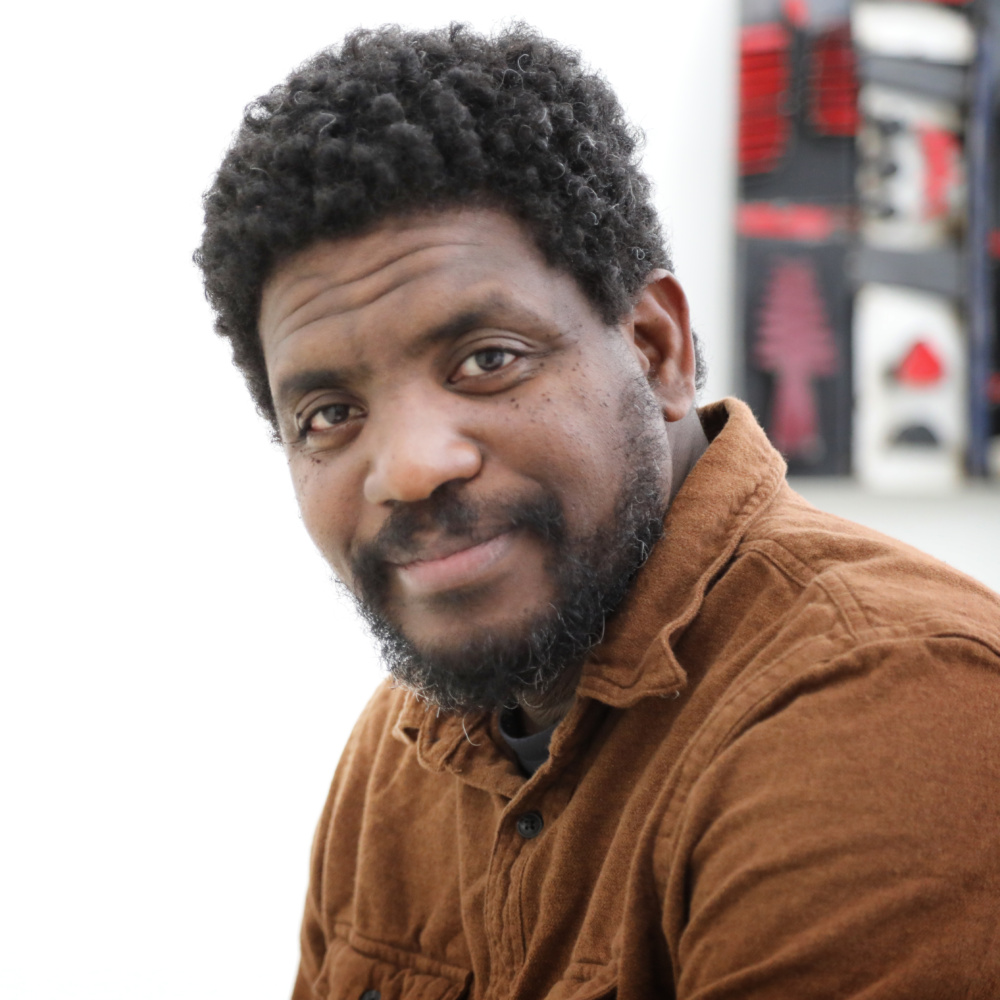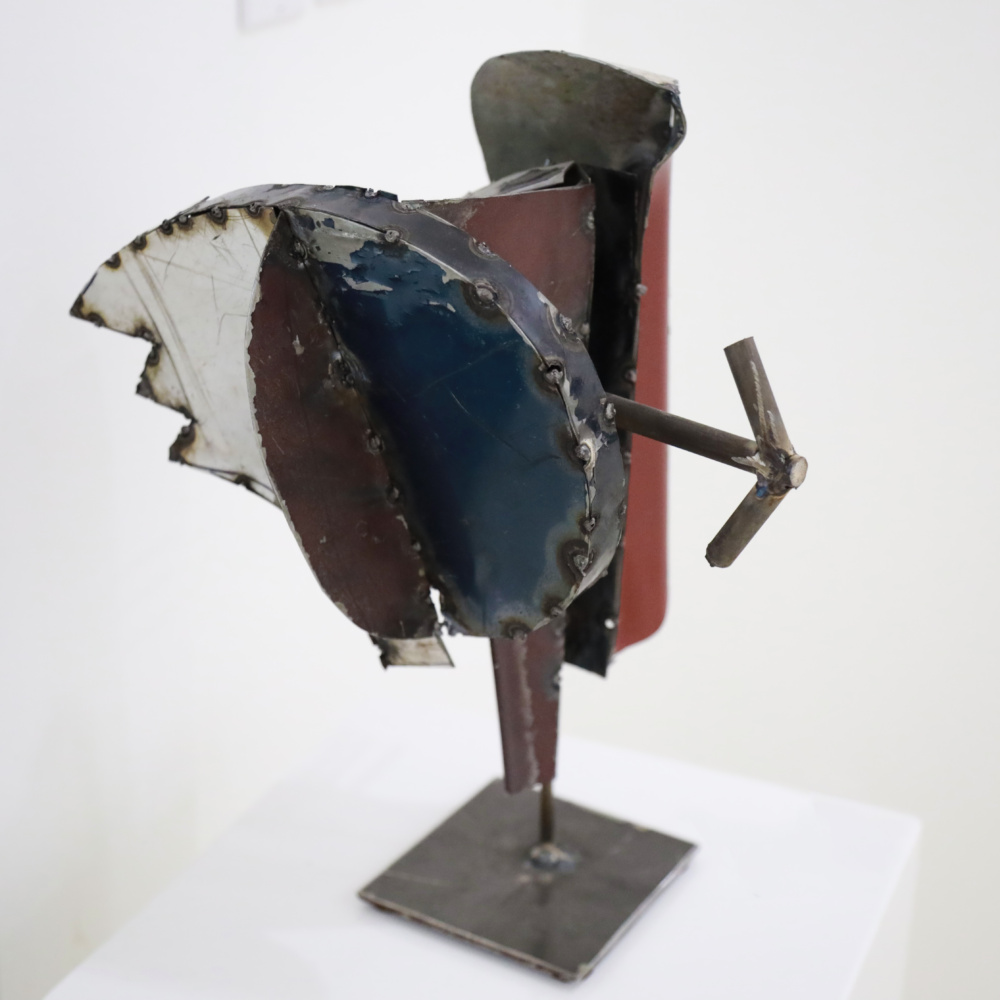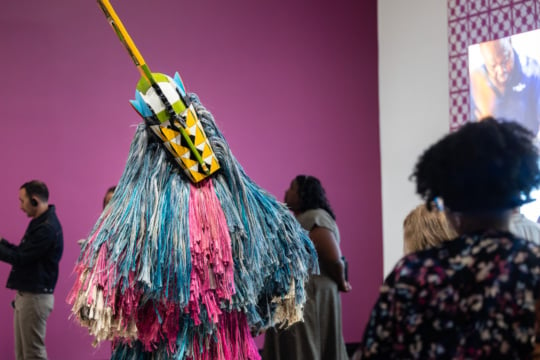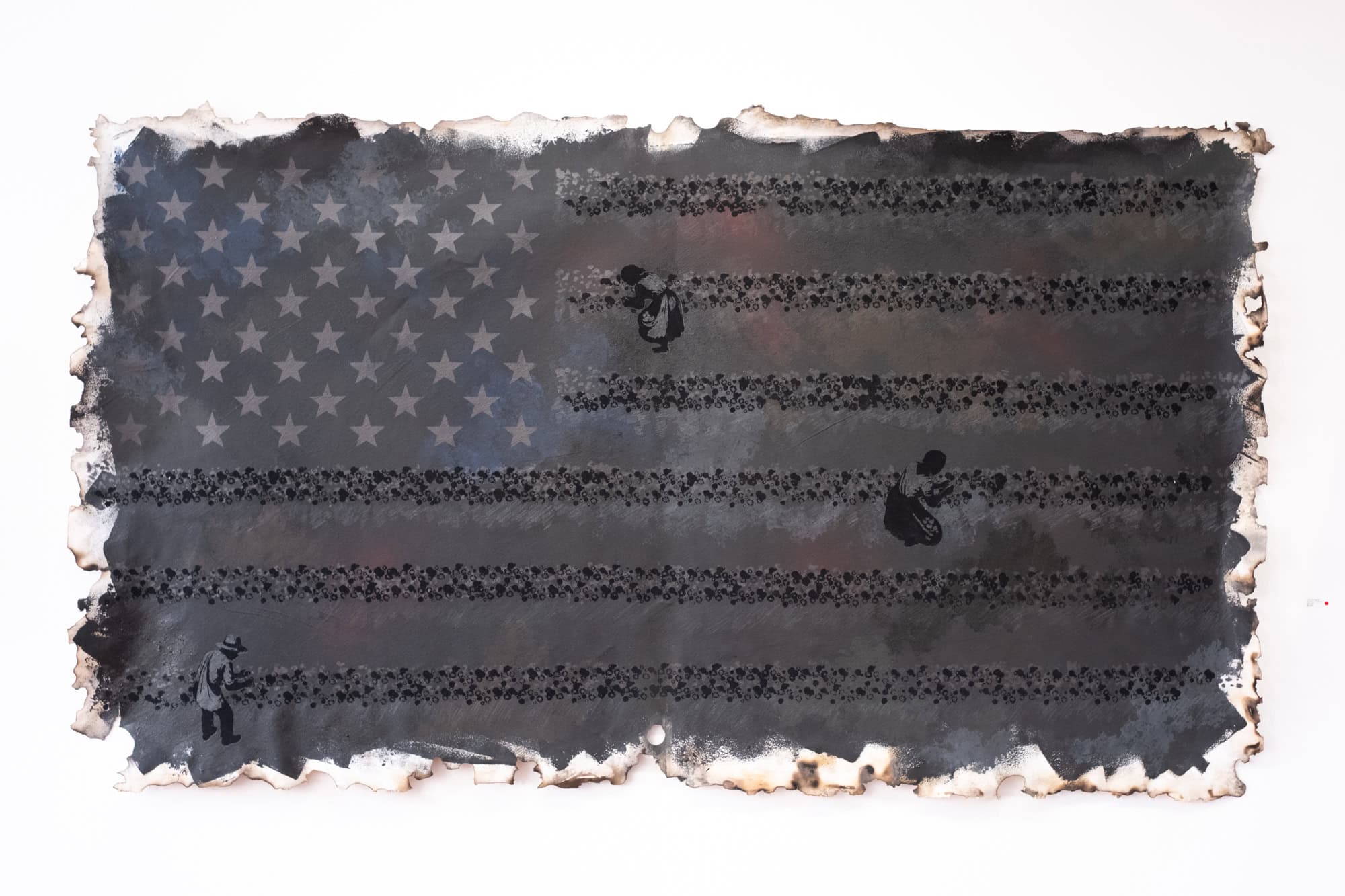
“This is my laboratory!” Wilay Méndez Páez declares with grandeur, sweeping his arms wide and smiling brightly. Where we meet is no actual laboratory, but a two-car garage in an Atlanta suburb during a torrential downpour on the hottest day of the year so far.
It is a special day for the Afro-Cuban artist and Havana native, just two days shy of the sixth anniversary of his move to Atlanta. He’s accomplished much in those six years, including several solo and group shows, as well as being named an artist-in-residence at the Clark Atlanta University Art Museum.
Páez’s garage—filled to the ceiling with boxes of materials and sketches (miniatures of larger metal sculptures just under a foot tall)—is his studio. For now, at least. As one of three MOCA GA’s 2025–2026 Working Artist Project winners, he is waiting to transition into his new studio space at the end of the summer.
For a good portion of the evening, we battle thick humidity from the storm just outside the garage to discuss his work, his process, and his explorations. His wife, and Associate Professor of Spanish at Spelman College, Anastasia Valecce, Ph.D., joins us after finishing a bedtime story for their two children. Páez grabs a sketch from a corner and blows a cobweb off it before displaying it on the table for me to see. It is one of many models from a set of sketches that he’s been working on for what will become several six-foot-tall metal sculptures. One sketch features a proud red rooster. Another a small fish alongside Egyptian symbols and abstractions of people. In each sketch he places on the table, Páez relays the symbolism, materials, and story he hopes to explore in his work: the narrative of human behavior.
This interview was edited for length and clarity, and was originally published in print for the Atlanta Art Fair 2025 broadsheet publication, taking place from September 25 to 28, 2025.

Thalia Butts: I’m sure you’re excited to move into your new studio soon, but can you tell me how you use this space as it is now?
Wilay Méndez Páez: At home, you know, sometimes you get the “Wow, this is the moment for [relaxing].” But it is not relax because when I finish with my children—three days a week I [am] with my children because my wife works and I work three days a week. But when I finish, I start working in the garage.
Or if it’s not working here, it’s in the experimental, in the experimentation of the shape. I work in drawing or reading some book or whatever. In my art, I am in touch with the civilization. The start to civilization, that scenario.
I’m very focused on how the people could be together in the big city. When you see the big city, you see shape, but at the same time, we are having a connection with this kind of situation. Because [if] you are in the metro of New York or Tokyo or Havana, you are going to see people together.
TB: You create with recycled metal, typically from car scraps. Why recycled materials? Why metal? Why this particular approach to materials?
WMP: Before I started to working with metal, I made sculptures in wood, small sculptures. I was maybe seventeen years old [then]. . . . I started to work with the metal when I was twenty. I’m maybe forty now. [Laughs.]
The reason that I create art with metal is because my father and my grandfather were mechanics. My grandfather raised me. He was a carpenter, but he fixed cars too. I grew up seeing them with this kind of ability. And I had to create art with [inexpensive] metal because I didn’t have money to create with bronze or copper or strong big stone. It was the cheapest material available.
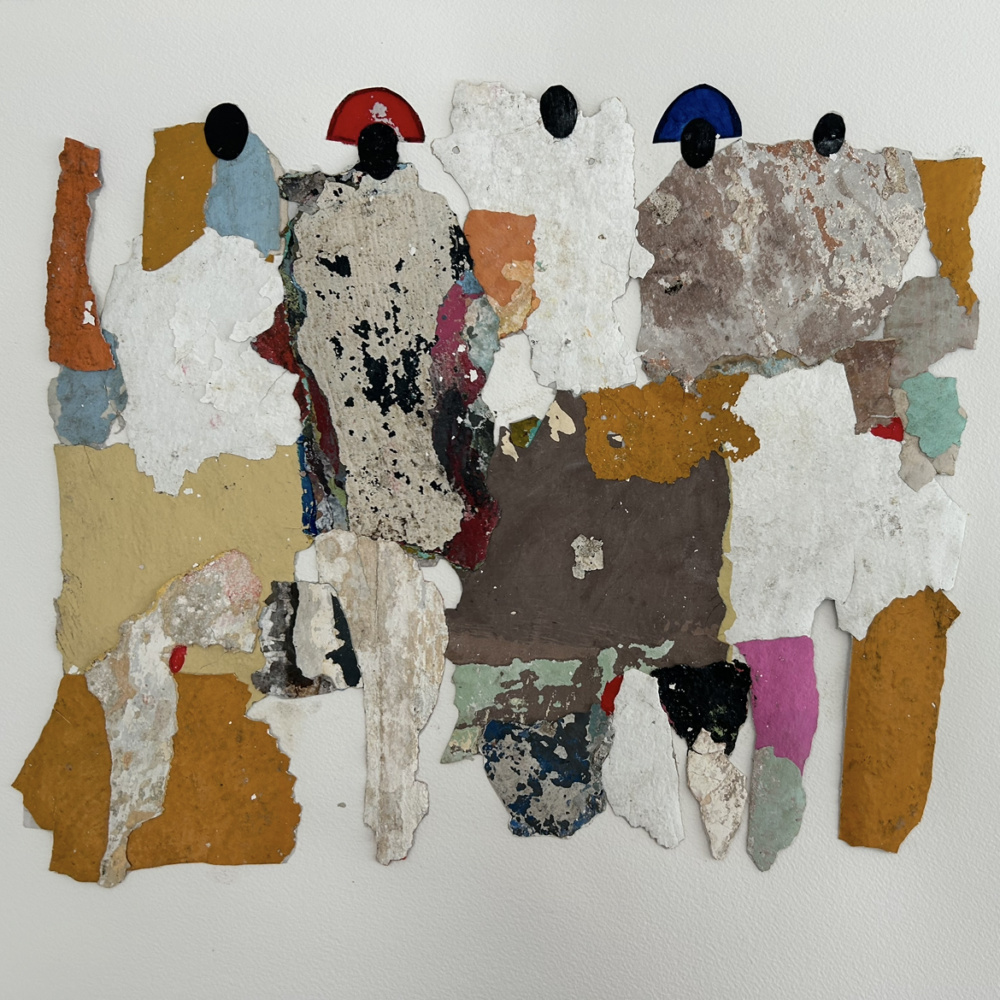
TB: How did your approach to your work change once you moved from Cuba to Atlanta?
WMP: I’ve had my conceptualization of my art since Cuba, but coming to Atlanta, it changed something in my art. Like the new material that they used in the cars. I used metal in Cuba from the old American cars from 1969. But when I came to the United States, I used new material because those are the cars that I could find. But in the conceptualization of the shape and the conceptualization of my art, it is the same.
TB: The Working Artist Project supports metro-Atlanta artists by providing a stipend, studio space, a studio assistant, presentation of a solo exhibition, among many other benefits. What does winning this award mean to you?
WMP: It’s about recognition. Because the Museum of Contemporary Art of Georgia is important for the artist because they show the contemporary art. And for me, it’s amazing because I have been working since twenty years old. I’ve been working and developing my art. I’m thinking about the possibility that the museum gives for you to get a platform in Atlanta, in Georgia, in another state from the United States. It’s not about the money, but it’s like the confirmation that the work is going in the right path.
